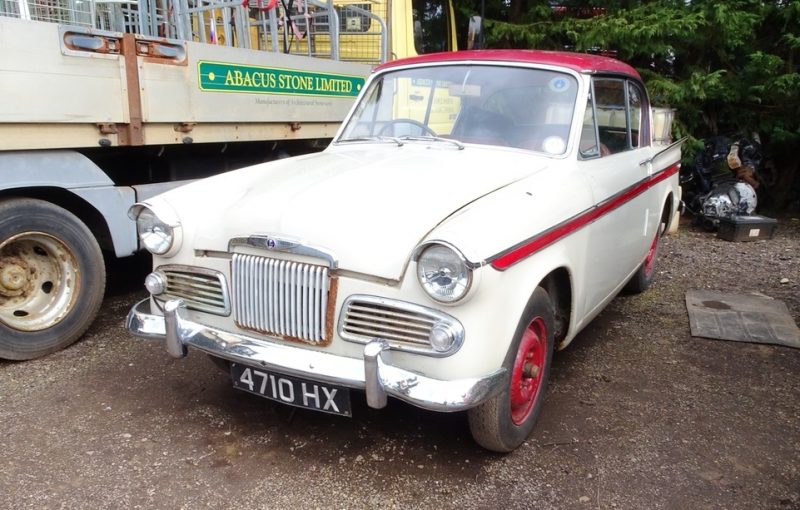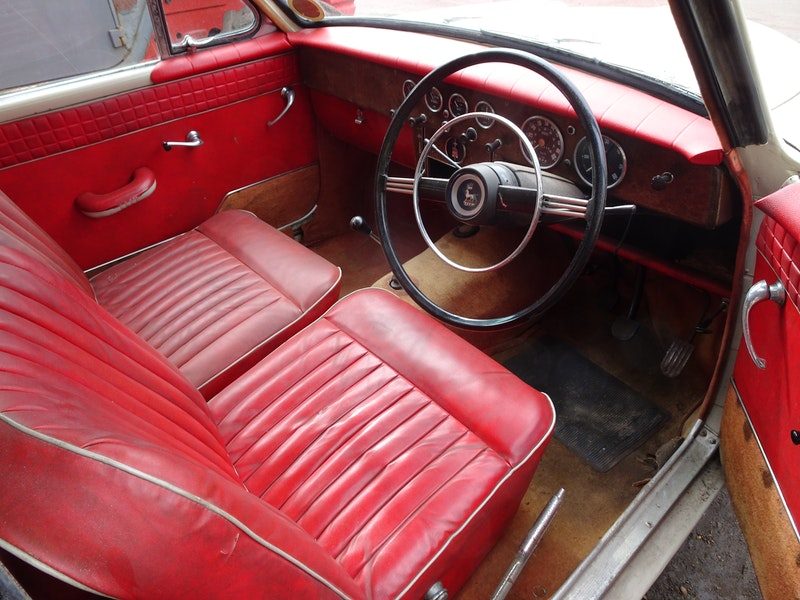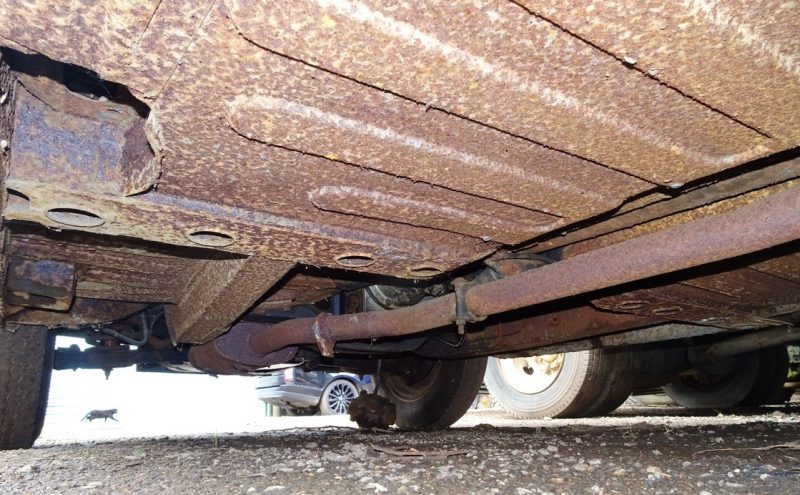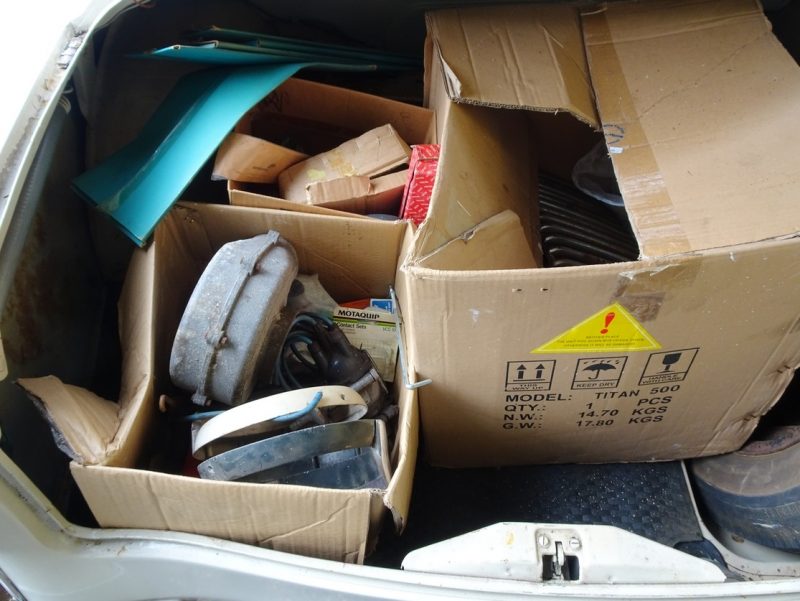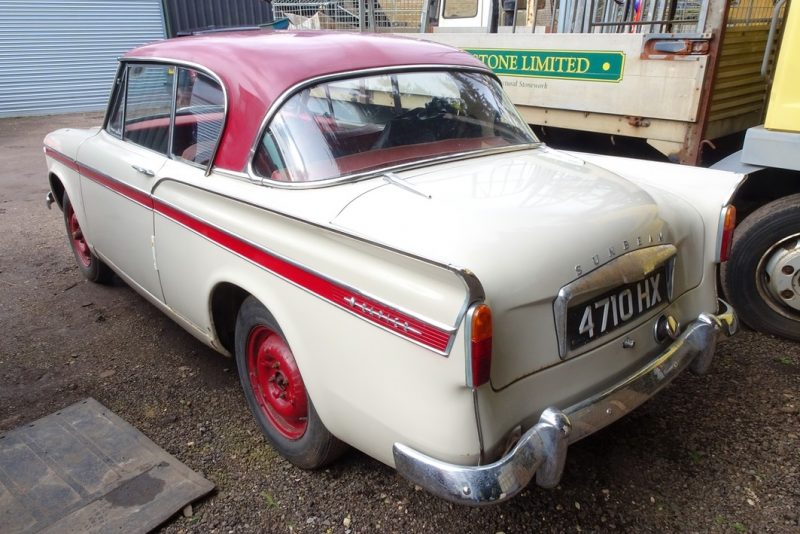1960 Sunbeam Rapier – Project Profile
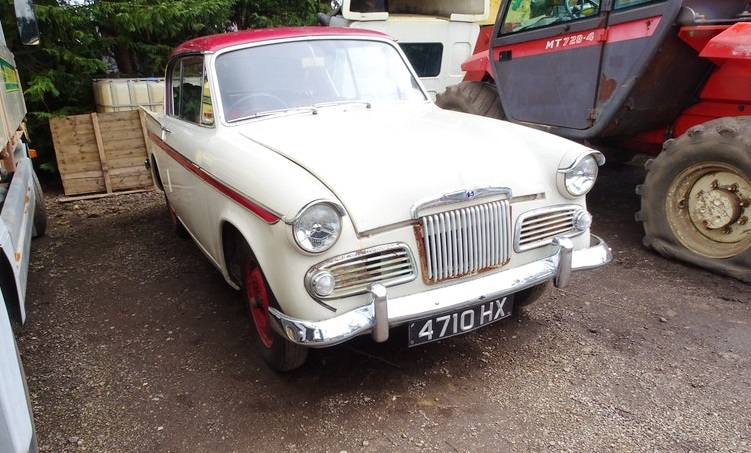
The 1960s was a vibrant, colourful time. We’d moved on from the drab greys, blacks and browns of the 1950s and were instead focusing on shiny, bright and exciting things. We’d observed American pop culture, with its music, its bright colours and its cars and we were left, as a nation, with an appetite whetted for fun. This was of course reflected in all walks of life, it was the ‘swinging sixties’ after all. Fashion, music and of course, cars all became, well, more interesting. Technologies had moved on. Industry was finally pulling completely free of pressures put on it by war and as such, it was time to have some fun. Chrome, fins, lots of red vinyl. It was all welcome.
One car that embodied all of those things was the Sunbeam Rapier. Already given an upbeat advantage with the name ‘Sunbeam’, it was a cool coupe that boasted fins and chrome aplenty. It wasn’t as big or as brash as its American counterparts, but it didn’t need to be. All it had to do was stand out on UK roads, and stand out it did.
What is it?
What we have here is a 1960 Sunbeam Rapier, which makes it a series three model. The individual differences between the series two and three were small, but when combined made for a car far different to its predecessor. The front side grilles had more slats – four rather than three. The rear number plate recess was different, the side ‘flash’ was lower down and for the eagle-eyed, the pillars were thinner and the scuttle was lower, increasing the windscreen size.
The engine was upped from the series two. This time, the engine – while still the same 1,494cc as it had been before – was in fact from the Sunbeam Alpine. This meant an aluminium head with eight ports, increased compression ratio, a more sporty camshaft and the twin Zenith carbs were now mated to a water-heated inlet manifold. As a result, the Rapier now had an impressive 78bhp. Racy for 1960.
The Rapier was available as either a two-door hardtop, as per the car here. Or as a convertible. Combined, 15,368 series three models were built between 1959 and 1961.
Why is it a project?
According to the advert, the car has been in storage for a number of years and as such, has fallen into disrepair. However, said storage appears to have been dry, as bar some surface corrosion, this little Rapier seems to be in remarkably solid condition. There are some parts missing, most notably relating to the ignition system, but the vendor assures us that everything the car needs has been kept and has been carefully boxed up before being stowed away in the boot.
Looking at the pictures, it’s obvious that there is no serious corrosion. At least not on the face of it. A proper inspection is of course encouraged. The panels all look very good though, as does the chrome. It looks like one of those cars that a weekend’s tinkering would put right! Maybe this is indeed going to be that easy.
The interior looks to be in remarkably good shape, including the headlining. The carpets have lost some of the red colouring over the years, but it all looks complete and solid and in need of nothing more than a thorough clean. This could be a very easy project indeed.
The underside of the Rapier even looks good, with surface rust looking like the only concern. But in a way, the lack of any rust protection is a blessing, as there is nothing there to hide any repairs or more serious corrosion. Have a look for yourself – it strikes us as needing nothing more than going over with a wire brush and a coat of stone-chip. This could, if the pictures are truly honest, be a very easy restoration indeed.
Five things to look for:
1) Rust
The vendor describes the car as being rather solid, and certainly that looks to be the case from the pictures. However, rust protection was near non-existent in 1960, so have a good look for any rot and more importantly, any poor past repairs.
2) Parts
The Rapier comes with a whole host of parts. It would be well worth having a sift through to see what’s there. There might be duplicates that can be sold on, there might be some rare stuff in there. Or, it might all be junk. Best to know before buying.
3) Engine
The engine turns over by hand, which is of course a good thing. Some ignition parts are missing, so you won’t get it started. However, you can still carry out some basic checks. Oil condition, core plugs, cooling system visual inspection, that kind of thing.
4) Panels/Body
The Rapier was a charming collection of pointy bits and curvy bits. Finding replacement panels for one is going to be a big ask, so check the body for any damage or any corrosion. Repair is almost certainly going to need bespoke fabrication work.
5) Paperwork
There is an old logbook with the car, but not a current one. It sounds as though the car has come from part of an estate. Check what is there to make sure getting it registered in your name isn’t going to be too much of a problem.
What should you do with it?
This 1960 Sunbeam Rapier, if it’s as solid as the vendor says it is, could be the perfect candidate for restoration back to how it once was. It’s a charming, quirky, little machine with robust mechanicals that should, when rebuilt, give many years of motoring. There is an excellent following for this model, too, meaning that help is never going to be far away. Mechanical parts are reasonably easy to come by and everything that’s not, seems to be with the car already. As such, it could be a nice, easy restoration. And the kind of restoration that would hopefully build some good value into the car, too. Not that it will matter, because you’re sure to fall in love with it.

